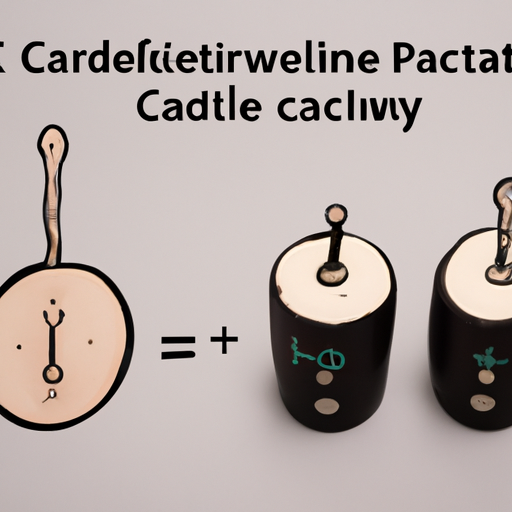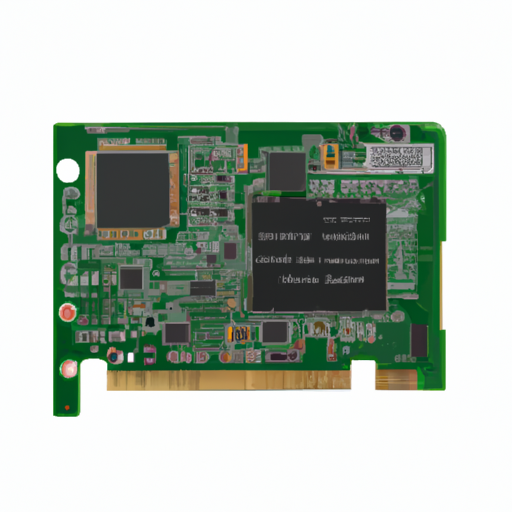How do ceramic capacitors work?
How Do Ceramic Capacitors Work?
I. Introduction
Ceramic capacitors are essential components in modern electronic circuits, playing a crucial role in energy storage, filtering, and signal coupling. These capacitors are made from ceramic materials, which provide unique electrical properties that make them suitable for a wide range of applications. In this article, we will explore the fundamental principles of capacitance, the structure and functioning of ceramic capacitors, their types, advantages, limitations, applications, and future trends in technology.
II. Basic Principles of Capacitance
A. Definition of Capacitance
Capacitance is the ability of a component to store electrical energy in an electric field. It is defined as the ratio of the electric charge stored on one plate of a capacitor to the voltage across the plates. The unit of capacitance is the farad (F), which is a large unit; most capacitors used in practical applications are measured in microfarads (µF) or picofarads (pF).
B. The Role of Electric Fields in Capacitance
When a voltage is applied across the plates of a capacitor, an electric field is created between them. This electric field stores energy, and the amount of energy stored is proportional to the capacitance and the square of the voltage. The electric field is a crucial aspect of how capacitors function, as it allows for the separation of positive and negative charges.
C. Explanation of Dielectric Materials
Dielectric materials are insulators that can be polarized by an electric field. They are used in capacitors to increase capacitance by allowing more charge to be stored for a given voltage. The dielectric constant of a material indicates its ability to store electrical energy; higher dielectric constants result in higher capacitance.
III. Structure of Ceramic Capacitors
A. Composition of Ceramic Materials
Ceramic capacitors are made from various ceramic materials, primarily barium titanate (BaTiO3) and other ferroelectric ceramics. These materials are categorized into two classes:
1. **Class 1 Dielectrics**: These ceramics have stable capacitance over a wide range of temperatures and voltages. They are typically used in applications requiring precision and stability, such as timing circuits.
2. **Class 2 Dielectrics**: These ceramics have higher capacitance values but exhibit more variation with temperature and voltage. They are commonly used in applications where size and capacitance are more critical than stability, such as decoupling and filtering.
B. Physical Structure of Ceramic Capacitors
Ceramic capacitors consist of multiple layers of ceramic dielectric material interleaved with metal electrodes. The physical structure can vary, but two common configurations are:
1. **Multilayer Ceramic Capacitors (MLCCs)**: These capacitors have multiple layers of dielectric and electrodes stacked together, allowing for high capacitance in a small package.
2. **Disc Capacitors**: These are single-layer capacitors with a disc shape, typically used in applications where size is less of a concern.
IV. How Ceramic Capacitors Function
A. Charging and Discharging Process
When a voltage is applied to a ceramic capacitor, the electric field causes positive and negative charges to accumulate on the respective plates. The dielectric material plays a crucial role in this process by preventing the charges from flowing directly between the plates, thus allowing the capacitor to store energy.
1. **Mechanism of Charge Storage**: The stored charge is proportional to the capacitance and the applied voltage. When the voltage is removed, the capacitor retains the charge until it is discharged through a connected circuit.
2. **Role of the Dielectric in Charge Separation**: The dielectric material enhances the capacitor's ability to store charge by increasing the electric field strength between the plates, allowing for greater energy storage.
B. Frequency Response and Impedance Characteristics
Ceramic capacitors exhibit different behaviors at various frequencies. At low frequencies, they act as open circuits, while at high frequencies, they can behave like short circuits. This frequency response is crucial for circuit design, especially in applications like filtering and decoupling.
1. **Behavior at Different Frequencies**: The impedance of ceramic capacitors decreases with increasing frequency, making them effective for high-frequency applications.
2. **Implications for Circuit Design**: Understanding the frequency response of ceramic capacitors helps engineers design circuits that optimize performance, particularly in RF and digital applications.
V. Types of Ceramic Capacitors
A. Class 1 Ceramic Capacitors
Class 1 ceramic capacitors are known for their stability and low loss characteristics. They are typically used in applications requiring precise capacitance values, such as timing circuits and oscillators.
B. Class 2 Ceramic Capacitors
Class 2 ceramic capacitors offer higher capacitance values but with less stability. They are widely used in applications like decoupling, filtering, and energy storage in power supply circuits.
C. Comparison Between Class 1 and Class 2 Capacitors
The primary difference between Class 1 and Class 2 ceramic capacitors lies in their stability and capacitance values. Class 1 capacitors are preferred for precision applications, while Class 2 capacitors are chosen for their higher capacitance in smaller sizes.
VI. Advantages of Ceramic Capacitors
A. Size and Form Factor
Ceramic capacitors are available in small sizes, making them ideal for compact electronic devices. Their small form factor allows for high-density circuit designs.
B. Stability and Reliability
Ceramic capacitors exhibit excellent stability over time and under varying environmental conditions, making them reliable components in electronic circuits.
C. Temperature and Voltage Characteristics
These capacitors can operate over a wide range of temperatures and voltages, providing versatility in various applications.
D. Cost-Effectiveness
Ceramic capacitors are generally more cost-effective than other types of capacitors, making them a popular choice for manufacturers.
VII. Limitations of Ceramic Capacitors
A. Voltage Coefficient and Capacitance Variation
One limitation of ceramic capacitors, particularly Class 2 types, is their voltage coefficient, which can lead to significant capacitance variation under different voltage conditions.
B. Microphonics and Piezoelectric Effects
Ceramic materials can exhibit microphonics, where mechanical vibrations induce electrical signals, potentially affecting circuit performance. Additionally, piezoelectric effects can lead to unintended capacitance changes.
C. Aging Effects and Long-Term Reliability
Ceramic capacitors may experience aging effects, leading to gradual changes in capacitance over time. This can impact long-term reliability in critical applications.
VIII. Applications of Ceramic Capacitors
A. Consumer Electronics
Ceramic capacitors are widely used in consumer electronics, including smartphones, tablets, and laptops, for decoupling and filtering applications.
B. Automotive Applications
In the automotive industry, ceramic capacitors are used in various electronic control units (ECUs) and safety systems, where reliability and performance are paramount.
C. Industrial and Telecommunications
These capacitors are essential in industrial automation and telecommunications equipment, providing stability and performance in demanding environments.
D. Power Supply Circuits
Ceramic capacitors are commonly used in power supply circuits for filtering and energy storage, ensuring stable voltage levels.
IX. Future Trends in Ceramic Capacitor Technology
A. Advances in Materials Science
Research in materials science is leading to the development of new ceramic materials with improved dielectric properties, enhancing the performance of ceramic capacitors.
B. Innovations in Manufacturing Processes
Advancements in manufacturing techniques are enabling the production of smaller, more efficient ceramic capacitors, meeting the demands of modern electronics.
C. Emerging Applications and Market Trends
As technology evolves, new applications for ceramic capacitors are emerging, particularly in high-frequency and high-density circuits, driving market growth.
X. Conclusion
Ceramic capacitors are vital components in modern electronics, offering a unique combination of size, stability, and cost-effectiveness. Understanding their principles, structure, and functionality is essential for engineers and designers working in the field. As technology continues to advance, ceramic capacitors will play an increasingly important role in the development of innovative electronic devices.
XI. References
1. "Capacitors: Principles and Applications" - Academic Press
2. "Ceramic Capacitors: A Comprehensive Guide" - IEEE Journals
3. "Understanding Ceramic Capacitors" - Electronics Tutorials
4. "Advances in Ceramic Capacitor Technology" - Journal of Materials Science
5. "The Role of Capacitors in Electronic Circuits" - Electronics Weekly
This blog post provides a thorough overview of ceramic capacitors, their working principles, types, advantages, limitations, applications, and future trends, making it a valuable resource for anyone interested in understanding these essential electronic components.







